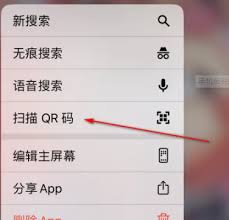According to my survey, there are many simulators in the literatures and practice:
1. TOSSIM: http://www.cs.berkeley.edu/~pal/research/tossim.html
- A TinyOS mote simulator which is useful for testing both the algorithms and implementations
- Allowing experimentation with low-level protocols in addition to top-level application systems
- Tython: http://www.tinyos.net/tinyos-1.x/doc/tython/tython.html
- A scripting environment which uses TOSSIM for testing and analyzing sensor network applications
2. NS-2: http://www.isi.edu/nsnam/ns/
- Discrete event simulator: provides support for simulation of TCP, routing, and multicast protocols over wired and wireless (local and satellite) networks.
- Pros:
- Separate protocol implementation from scenario scripting
- Cons:
- No support for WSN (need extensions)
- Mixture of oTcl and C++
3. Mannasim (NS-2 Extension for WSN): http://www.mannasim.dcc.ufmg.br
- Pros:
- Have SGT (Script Generator Tool): front-end of for TCL script creation, written in Java, reducing the burden of programmer
4. SENSE: http://www.ita.cs.rpi.edu/sense/index.html
- Pros:
- Extensibility: Component-port Model & Simulation Component Classification
- Reusability: extensive use of C++ template
- Scalability
- Cons:
- All simulations require writing C++ code
5. OMNet++: http://www.omnetpp.org/
- Pros:
- Strong GUI support
- Provides Component architecture for models. Components (modules) are written in C++, then assembled into larger components and models using a high-level language (NED).
- Discrete event simulator with many extensions for wireless network simulation.
- NesCT: http://nesct.sourceforge.net/
- Convert nesC classes to C++ classes for OMNet++
6. Castalia (OMNet++ Extension for WSN): http://castalia.npc.nicta.com.au/
- Pros:
- Generic reliable and realistic framework for the first order validation of an algorithm before moving to implementation on a specific sensor platform
7. J-Sim (formerly Java-Sim): http://www.j-sim.org/
- Pros:
- Component-oriented architecture instead of OO design like NS-2
- Platform neutral
- Extensible
- Reusable
- Cons:
- Low performance (for large WSN simulation)
8. Qualnet (formerly GloMoSim): http://www.scalable-networks.com/
9. VisualSense (for Ptolemy II): http://ptolemy.berkeley.edu/visualsense/
10. AlgoSenSim: http://tcs.unige.ch/doku.php/code/algosensim/overview
- It is not protocol stack oriented but algorithm oriented: localization, distributed routing, flooding…
11. GTNetS: http://www.ece.gatech.edu/research/labs/MANIACS/GTNetS/index.html
12. Other Simulators:
- SensorSim: http://nesl.ee.ucla.edu/projects/sensorsim/ DIED
- WISENET: http://cegt201.bradley.edu/projects/proj2003/wisenet/index.html For AVR IS
- atemu: http://www.hynet.umd.edu/research/atemu/ For AVR IS and MICA2 board components
- Shawn: http://shawn.sourceforge.net/wiki/index.php/Hauptseite Not much documentation
- Avrora: http://compilers.cs.ucla.edu/avrora/ for AVR IS and MICA2 board components










